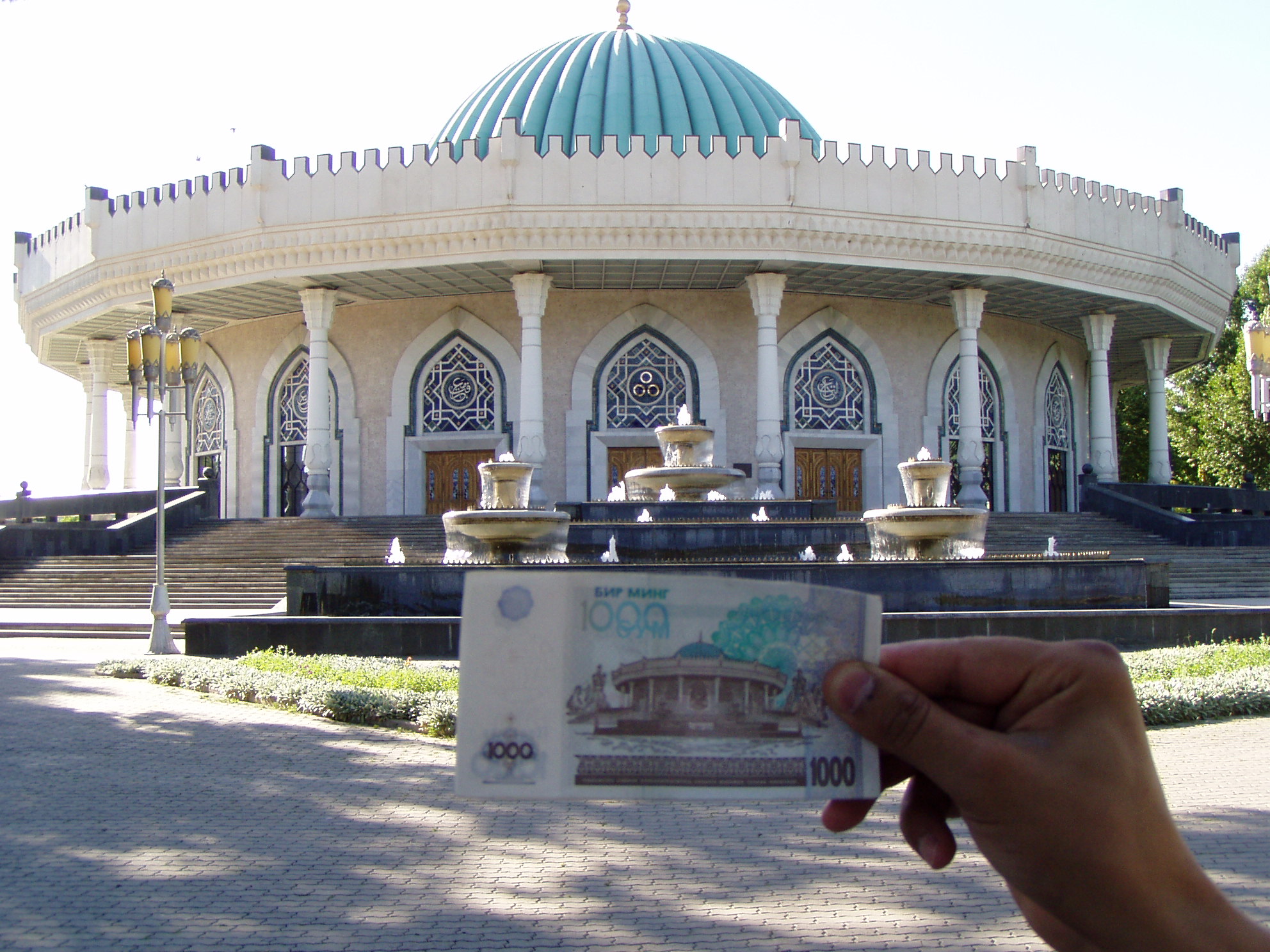Amir Timur Museum on:
[Wikipedia]
[Google]
[Amazon]
The Amir Timur Museum is located in
 There are more than 5,000 artifacts in the museum collection, with more than 2,000 displayed in museum exhibition halls. In particular, the museum displays focus on the genealogy of Amir Temur, his coming to power, the military campaigns of Sahib Kiran, diplomatic and trade relations, workmanship, city improvement and landscaping, and science and education development. There are also exhibits related to representatives of the Timurid dynasty, including maps, weapons, copper and silver coins, miniatures, rare manuscripts, potteries, and jewelry.
There are more than 5,000 artifacts in the museum collection, with more than 2,000 displayed in museum exhibition halls. In particular, the museum displays focus on the genealogy of Amir Temur, his coming to power, the military campaigns of Sahib Kiran, diplomatic and trade relations, workmanship, city improvement and landscaping, and science and education development. There are also exhibits related to representatives of the Timurid dynasty, including maps, weapons, copper and silver coins, miniatures, rare manuscripts, potteries, and jewelry.
Museum of Amir Timur at Aba Travel
{{Authority control Museums in Tashkent
Tashkent
Tashkent (, uz, Toshkent, Тошкент/, ) (from russian: Ташкент), or Toshkent (; ), also historically known as Chach is the capital and largest city of Uzbekistan. It is the most populous city in Central Asia, with a population of ...
, the capital of Uzbekistan
Uzbekistan (, ; uz, Ozbekiston, italic=yes / , ; russian: Узбекистан), officially the Republic of Uzbekistan ( uz, Ozbekiston Respublikasi, italic=yes / ; russian: Республика Узбекистан), is a doubly landlocked cou ...
. It opened in 1996, and is dedicated to the Turco-Mongol
The Turco-Mongol or Turko-Mongol tradition was an ethnocultural synthesis that arose in Asia during the 14th century, among the ruling elites of the Golden Horde and the Chagatai Khanate. The ruling Mongol elites of these Khanates eventually ...
warlord Amir Timur
Timur ; chg, ''Aqsaq Temür'', 'Timur the Lame') or as ''Sahib-i-Qiran'' ( 'Lord of the Auspicious Conjunction'), his epithet. ( chg, ''Temür'', 'Iron'; 9 April 133617–19 February 1405), later Timūr Gurkānī ( chg, ''Temür Kür ...
(Tamerlane).
Origin
After Uzbekistan became independent in 1991, much attention was given to the revival of the nation's spiritual and cultural heritage, including recognition of historical persons who had an important role in world civilization. Among those was Amir Temur, the warlord, politician and reformer, patron of science, education, trade, culture, and craft. Having established a great centralized state, he strengthened its power and also united many nations and people. Amir Temur's rule promoted science, education, culture, architecture, fine arts, music and poetry, laying the foundations of theTimurid Timurid refers to those descended from Timur (Tamerlane), a 14th-century conqueror:
* Timurid dynasty, a dynasty of Turco-Mongol lineage descended from Timur who established empires in Central Asia and the Indian subcontinent
** Timurid Empire of C ...
Renaissance.
Former President Islam Karimov
Islam Abduganiyevich Karimov ( uz, Islom Abdugʻaniyevich Karimov / Ислом Абдуғаниевич Каримов, italics=no; russian: link=no, Ислам Абдуганиевич Каримов; 30 January 1938 – 2 September 2016) was t ...
encouraged celebration of Timur, linking the Mongol ruler's achievements with the President's own style of governance. Karimov declared 1996 to be the “Year of Amir Temur”, and the 660th anniversary was widely celebrated in Uzbekistan, and the republic subsequently resolved to build a state museum in central Tashkent, featuring the Timurid history.Resolution 99 of the Cabinet of Ministers of the Republic of Uzbekistan, 14 March 1996
Opening
The ceremonial opening of the round museum structure was held on 18 October 1996 in the presence of Uzbek people and foreign guests. President Karimov stated that "The State Museum of the History of the Temurids which is opening in such a holiday conditions is the real result of the fact that in our country the historical justice towards the personality of Sahibkiran has triumphed". He compared Amir Timur Square (which is located adjacent to the museum, with a statue of Timur) to a ring, saying "the Museum is a precious stone decorating it".Design
The museum's blue cupola resembles that of theGur-e-Amir
The Gūr-i Amīr or Guri Amir ( uz, Amir Temur maqbarasi, Go'ri Amir, fa, گورِ امیر) is a mausoleum of the Turco-Mongol conqueror Timur (also known as Tamerlane) in Samarkand, Uzbekistan. It occupies an important place in the history of C ...
mausoleum in Samarkand
fa, سمرقند
, native_name_lang =
, settlement_type = City
, image_skyline =
, image_caption = Clockwise from the top:Registan square, Shah-i-Zinda necropolis, Bibi-Khanym Mosque, view inside Shah-i-Zinda, ...
. Though the museum was built according to the traditions of medieval architecture, it satisfies modern requirements.
Exhibits
Visitors
The museum attracts more than 2 million visitors annually. It is visited by foreign statesmen and official delegations, and more than 800 such delegations have been recorded in the museum guest book.International links
Through participation in international exhibitions, the museum has promoted its material and spiritual heritage around the world. In particular, unique exhibits were displayed at the international exhibitions as "Timurid Renaissance" in France; atExpo 2000
Expo 2000 was a World Expo held in Hanover, Germany from 1 June to 31 October 2000. It was located on the Hanover Fairground (Messegelände Hannover), which is the largest exhibition ground in the world. Initially some 40 million people were expe ...
in Hannover, Germany; and "Bright colors: fabrics and ceramics from Central Asia" at the Powerhouse Museum
The Powerhouse Museum is the major branch of the Museum of Applied Arts & Sciences (MAAS) in Sydney, the others being the historic Sydney Observatory at Observatory Park, Sydney, Observatory Hill, and the newer Museums Discovery Centre at Castle ...
in Sydney, Australia.
Education and research
The museum carries out educational work with young people, encouraging respect and love towards heritage, history, and historical figures. To this end, the museum holds spiritual enlightenment activities in collaboration with schools, colleges, and lyceums.References
External links
Museum of Amir Timur at Aba Travel
{{Authority control Museums in Tashkent